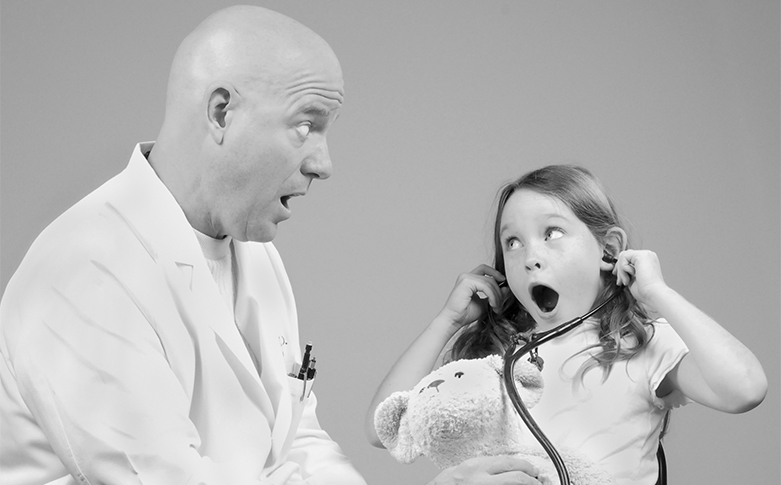



Inexperienced nurses may underestimate the importance of bedside manners in their work or completely misunderstand what it means. Yet this is a skill that is just as important to develop as learning how to read a blood pressure monitor or check for a pulse. How you interact with your patients will set the tone and determine whether they will be receptive to your care. Take a look at these common nurse-patient scenarios and learn the right and the wrong way to deal with them.
As a nurse, you are going to see your fair share of hemorrhoids and sexually transmitted infections, and you will learn to just treat them as common place medical issues. The same is not true for your patient, who may sometimes require a little extra TLC in these circumstances.
• Bad Manners – Filling out forms or checking your phone while they are trying to describe their delicate situation. Or worse, having to hide a smirk of laughter behind your palm at their being uncomfortable.
• Bedside Manners – Making eye contact, taking notes, and acknowledging them as they speak. This takes away from their embarrassment and lets them know that their situation is nothing you have never heard before.
In a clinical setting you may forget the close proximity of other patients and staff members when speaking with your patients. While the background noise is just another part of your daily routine, this activity can make patients very uncomfortable.
• Bad Manners – Forcing a patient to speak to you when clearly they are uncomfortable with the number of others around who can see and hear them. Worse, asking them to show you a wound or symptom that is covered by clothing without first ensuring their privacy.
• Bedside Manners – Closing the curtain around the bed or the door to their room before beginning a consultation or treatment. Even if the patient is not modest, this will protect other patients from feeling embarrassed from being exposed to another’s personal issues.
You will be able to tell a lot about a patient by the way they act in front of you. Fidgeting, looking at the floor or constantly glancing at another family member can be signs of underlying issues that they are having trouble verbalizing.
• Bad Manners – Turning your back on a patient as they are talking or paying more attention to their chart than you are to them. Worse is when you don’t take the moment to ask them directly if there is anything else they want to tell you privately.
• Bedside Manners – Making direct eye contact, even if that means lowering your body to meet their head level. Speaking quietly, yet with authority to let them know that you are someone that can be trusted with any information they have to offer about themselves or their condition.
Your body language is equally important if you want patients to feel comfortable with your care.
• Bad Manners – Keeping your arms crossed in a defensive manner, avoiding eye contact, or even rubbing the back of your neck as if you are too tired to have to deal with their problem now.
• Bedside Manners – Your hands should be at your sides or clamped in front of you when speaking with patients and you should be comfortable with leaning into them as they speak if they are timid about sharing their symptoms with you.
All nurses will come across those situations where they are quick to assess a situation based purely on how a patient looks, or the type of medical attention they are asking for. It is important that as a nurse you avoid allowing snap judgments to dictate the level of care.
• Bad Manners – Offering unsolicited advice to patients with weight issues, mothers with many children, or teenagers asking about contraception methods. There could often be an underlying cause for why a patient is in a situation that you are not aware of.
• Bedside Manners – Providing an environment where the patient feels comfortable enough to tell you that they eat because they are depressed, or are too embarrassed to ask about the pill. Once they open up to you, you can then provide them with the right advice and information for their situation.
Being reassuring and careful with your words will help to ease patient’s fears. No matter how small a medical problem is, your patient was frightened enough by it to seek medical attention, meaning and need to know that they are going to be okay.
• Bad Manners – Using a lot of medical terms and phrases when describing their treatment. Also using any negative words in your sentences like “there is nothing wrong” or “there is no real problem”. A patient will tune into the words “wrong” and “problem” and forget about the nothing or no that came before them.
• Bedside Manners – Speaking positively about their condition and assuring them that everything is going to be okay. Make sure that they understand that you are there for them at every step of the way by showing that you know how they must be feeling.
It takes time and experience for a nurse to perfect a bedside manner that makes all patients feel at ease. Practice this skill the same way that you practice drawing blood to avoid inadvertently hurting your patients feelings in their time of need.
When we discuss students, we always mention their qualities. Those qualities show what they are…
If you or someone you know is juggling mental health issues alongside substance abuse, understanding…
For the last couple of weeks, the Israel-Hamas conflict has taken over the news cycle.…
Our eyes are invaluable, serving as our windows to the world. The ability to see…
Undoubtedly, one of the most demanding and challenging professions is nursing. Nurses work long hours in…
Echocardiography, or echo for short, is a key diagnostic test used by cardiologists to assess…